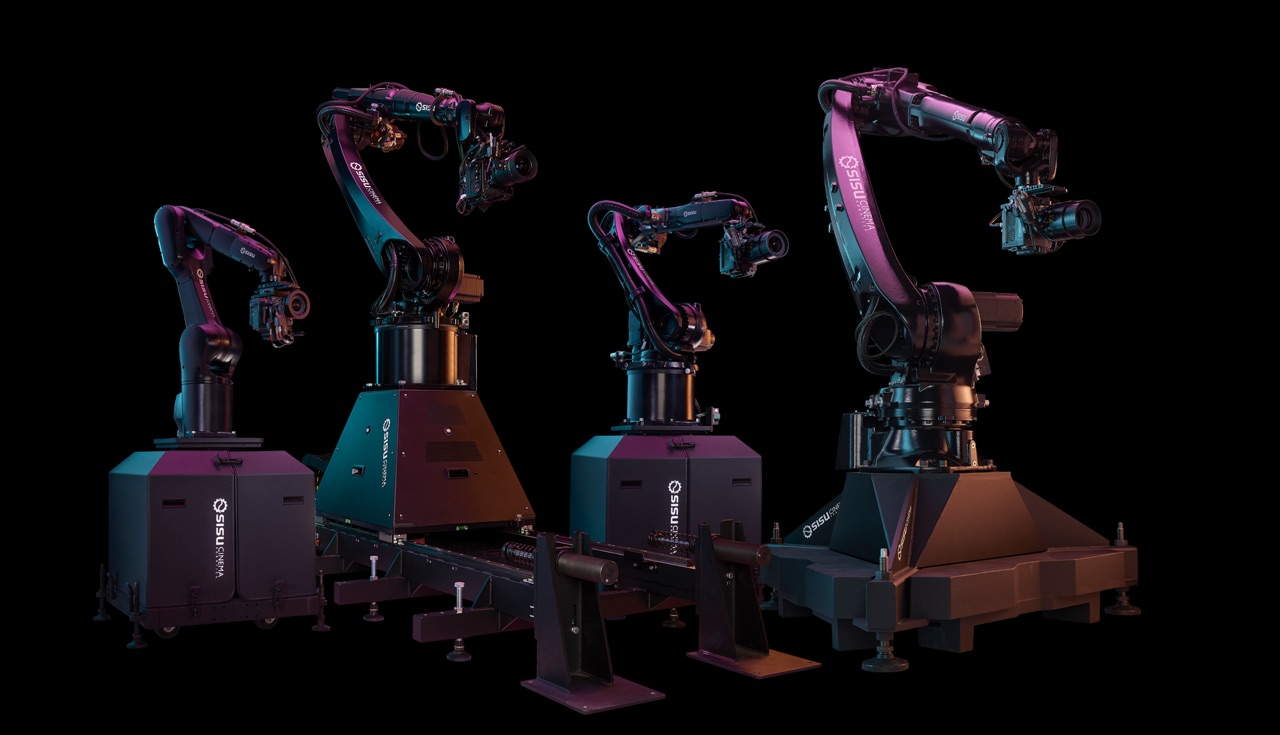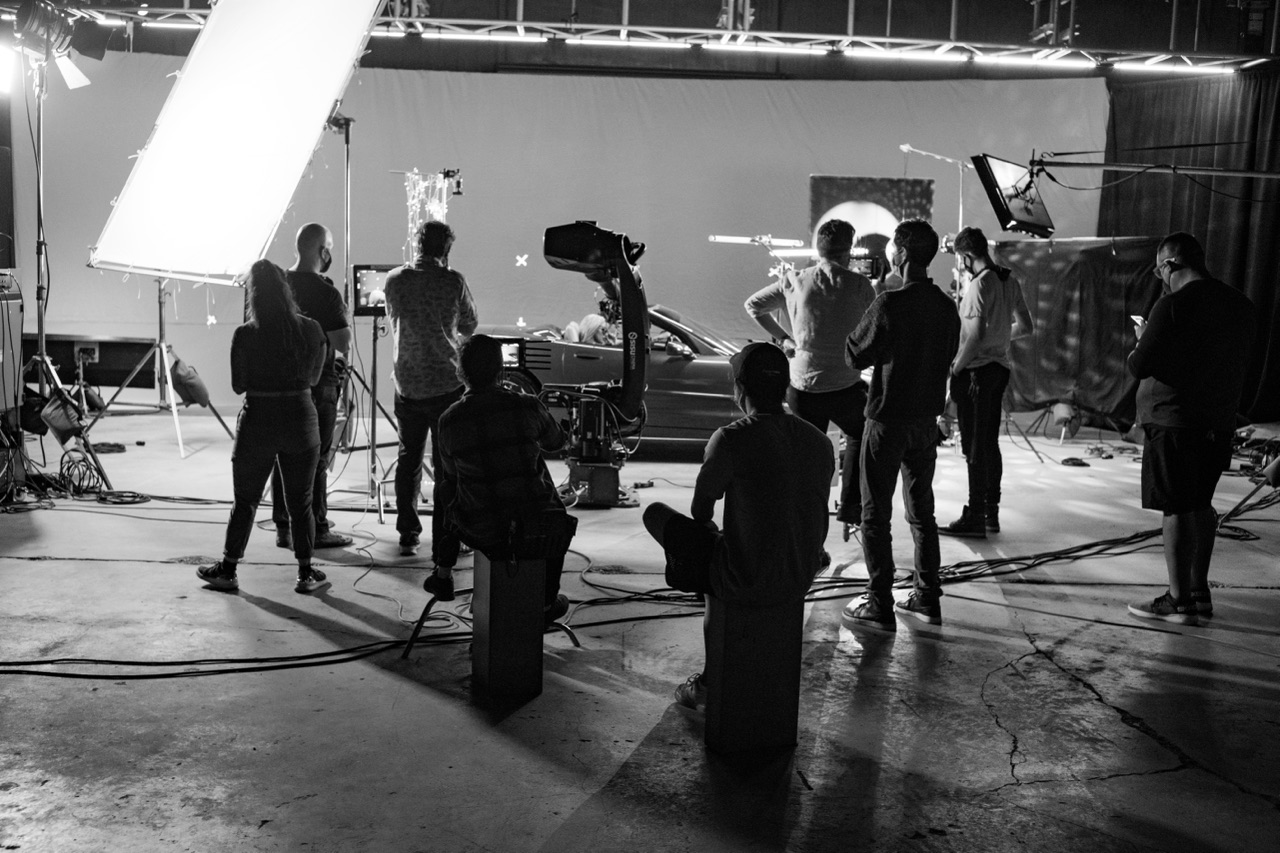Go behind the scenes with SISU Cinema Robotics and the precision imagery their ‘cinebots’ can pull off.
It was at a trade show relating to engineering and automation when a videographer suggested to the company SISU that they put a camera on one of their existing programmable robot arms.
Suddenly, the idea behind SISU Cinema Robotics was born, and it now sells a range of ‘cinebots’, effectively programmable motion control robotic arms that can hold cinema cameras and achieve repeatable moves and often impossible shots.
You’ve seen the results of filming with these cinebots in many commercials, where, say, slow-motion pieces of flying food fill the screen, or in TV shows or films for a variety of elaborate shots. SISU’s main selling points for the bots, aside from allowing these very cool in-camera shots that human camera operators cannot necessarily do, is that they can be set up and programmed very quickly on set or on location.
But, how do the cinebots work? We asked the team from SISU Cinema Robotics to break it down.
The tech behind the bots
SISU has three different robots (the C14, C20 and C31) in three different sizes, made up of the arm unit itself, a transformer box, and base or any track. The arm lengths range from 1.4 meters to 3.1 meters. “Our systems come with the robot on a pedestal or on a track,” explains SISU head of marketing Michael Morgan. “They’re all six axis arms, so you’ve got full control over the position as well as rotation, with six degrees of freedom.”
To control the robots, SISU employs both a tablet and a wand setup. “You can move the robot with the wand and then program moves with the tablet,” says Morgan. “With the wand, there’s a trigger on it and you squeeze that trigger as if you’re virtually grabbing the camera. So whatever you do with your hand, the camera is just going to follow. There’s also a joystick, which is more like you’re driving the camera around like you would in a video game. The system always knows where that wand is, no matter where you’re standing on set. You can move around or you can move to the other side of the set and it knows. You never have to think backwards.”

The idea is to get the camera into the position you need, and then you can set a keyframe on the tablet on your timeline. SISU has developed software in-house, called SISU Lab, that enables the interaction between wand, robot and tablet.
“There are then ways to import files from, say, Maya to bring in moves,” adds SISU VP Jeremy Allen. “Plus there’s FBX import and export. You can export FBX files which can then be used in Blender, After Effects, you name it, to have that position data for the camera. Or you can do it the other way. You can build a camera path in one of these programs, Maya for example, and import it into SISU Lab and then run that move in real life on the robot.”

The smallest of the SISU cinebots can carry a camera (or of course other equipment like lights) up to around 16 kilograms, and the largest up to 20 kilos. “We regularly put the RED KOMODO on there, we regularly put an ARRI LF on there, and the Phantom cameras, too,” observes Bryan Altham, an advisor and consultant to SISU. “The Sony cameras are becoming popular on the robots as well.”
SISU’s aim with their cinema robots has always been to have them somewhat self-contained, and as portable as possible for quick setup and operation. Altham, who has worked for many years on a range of Hollywood productions, recalls the challenge of shooting motion control. “Ten years ago, if someone said to me we’ve got a motion control shoot coming up, I’d think, ‘Well, that’s a day right there in scheduling.’ I’ve been through that many, many times. But with SISU and the way you can bring in the robot, and use the wand, reposition the arm to anywhere you need, you are able to do multiple shots in one day.”
Bots in action, including for VFX
Amongst commercials, independent films, action scenes and even ‘glam bot’ moments, the SISU cinebots have found several uses in recent times. This includes in the world of visual effects and virtual production. For example, the cinebots have, via their Live Link capabilities with Unreal Engine, seen operation on LED walls. They’ve also been utilized for filming multiple motion control passes to help build up elements and tiles.
“They were used on a Toyota commercial shoot recently,” relates Allen, “where it was a nighttime shoot and they people getting out of the car all kitted up in neon. They took the 20 extras they had in the background and they ran that same move five times, that is, take 20 people, have them start here, run here, then bring them back to a different location, mix them up and have them run again. And then have them run again and do the same move. Layering them up made 20 people look like 100. So all of a sudden instead of having to get 100 extras, you only need 20.”

Meanwhile, Ember Films employed a SISU cinebot for filming scenes on the Apple TV+ series Prehistoric Planet, as Morgan explains. “They used the FBX import tool that we have and used Maya to animate a dinosaur eating. Then there was a dinosaur head built which was put on the robot and they shot it in-camera doing that motion which looks so much more real than if it were done in CGI.”
The SISU team feel like there’s almost no end to where the cinebots will turn up. “I mean,” says Allen, “the last half of the year we placed a robot in India, which is our first robot there. That was for a Bollywood shoot with one of the biggest actors they have. Some of the action scenes they were filming with the robot were out on a beach location–the way people are using these has really been diversifying a lot recently.”
SISU will be at NAB in April, partnering with MagicBox to showcase the MagicBox Mobile Virtual Production Superstudio Gen 2.0 with the use of SISU robots. Find them at booth C8045.













